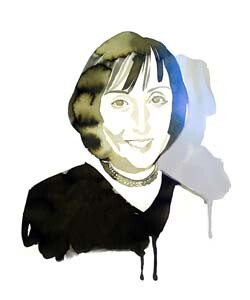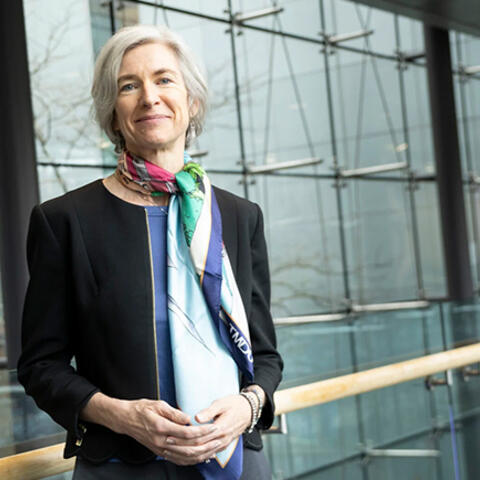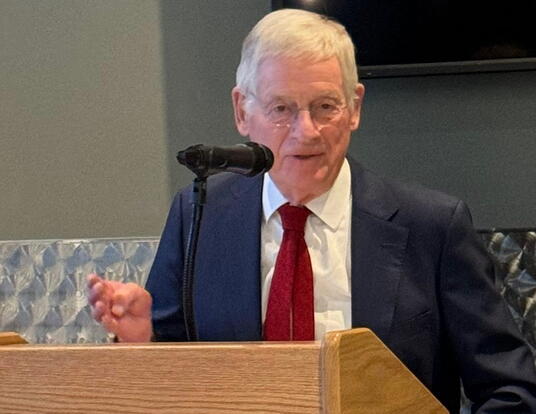Jennifer Montana Q&A
A technology innovator works to improve science and engineering education opportunities for children

With 20 years of experience launching and leading organizations, Jennifer Montana has advised companies and countries about how to spur innovation and entrepreneurial ventures. Her latest undertaking is The Innovation Institute (Ti2), an academic enrichment program in science and engineering for children aged 5 to 16 that helps young people develop critical and creative thinking skills using science and engineering as content. Montana’s decision to found Ti2 grew out of extensive work with industry, academic, nonprofit, and government leaders to advance investment in a science and technically skilled workforce and from her belief in community and commitment to service.
Montana received a BA in political science from the University of Wisconsin–Madison before earning an MA and a PhD from Harvard in political science as a Jacob K. Javits National Fellow. She serves as executive director of Ti2.
After earning your PhD, you worked briefly as a research associate before becoming involved with the Massachusetts Technology Collaborative. Why the switch to an organization advocating for technology innovation?
When I worked as a research associate for the Human Security Program at the Harvard School of Public Health (now the Harvard T.H. Chan School of Public Health), I had the honor of working with talented people whose deep commitment to humanity was unparalleled. Many were obtaining mid-career degrees in public health or administration while they decompressed from “work in the field” as aid workers and physicians in Rwanda, Burundi, or other regions with complex humanitarian emergencies. While I was in awe of their work and ethics, I struggled greatly as a PhD in political science with a predisposition towards systems-thinking to understand the “limits” of their interventions, especially given recent political and economic changes. I shared my perspective that the dissolution of bipolar relations between the US and the former Soviet Union ended the notion of neutrality in the field and that individuals from relief NGOs and IGOs, as well as journalists, were no longer safe in most conflict-laden areas.
Additionally, trends towards economic globalization (though relatively embryonic) were important but less well understood variables in this new era. At the time, I grappled with another vexing issue with which this group was also grappling—effective strategies from humanitarian relief to economic development. I tended to envision discontinuum where others saw a continuum.
My move to the Massachusetts Technology Collaborative enabled me to explore economic development with a specific focus on technology-based innovation. The economic regions with which I would work for 15 years shared little in common with war-torn regions apart from the critical exception of effective collaborative civic leadership. Technological innovation was heralded as a way to accelerate development within more stable developing countries. But applied without sensitivity to indigenous development patterns and needs, technology-based economic development projects often failed in these areas.
I became increasingly focused upon the notion of innovation as a source of reinvention, renewal, and competitiveness that could lead to positive economic outcomes for both people and place (in politically stable, economically developed areas). With ample quantitative data relative to developing regions, I became increasingly focused on the quantitative validation of different aspects of regional economic competiveness driven by technological innovation.
The focus on innovation-led economic development and competitiveness allowed me to continue on my career journey when I had the privilege to join Palo Alto–based Collaborative Economics (CEI), whose founders included another Harvard alumna, Kim Walesh MPP ’89. Joining CEI provided me with wonderful opportunities to continue exploring similar questions but not be limited to a focus on one region.
You launched your first company in 2000. What prompted you to strike out on your own and later make the intellectual property of one of your companies available to anyone?
I was compelled to launch my first venture due to loneliness (I missed my West Coast colleagues) combined with an unparalleled opportunity offered by the Kauffman Foundation to develop a program that extended my work on innovation and economic outcomes through a focus on entrepreneurship. It was clear that regions could have high levels of innovation but not realize the levels of economic prosperity, and entrepreneurship was another variable in the economic development equation. As this work evolved, I continued to pursue other opportunities and ultimately my first venture morphed into the second, Advanced Research Technologies.
I continued to consult and advise while developing an approach for identifying entrepreneurial changes within regional industry structures. In simplistic terms, it seemed that innovation as measured by quantitative variables was much more likely to have an impact upon economic outcomes if there was substantial entrepreneurship activity—for example, through starting and growing businesses in traded industries (not just local serving ones).
I spent a lot of time looking at this question from a research methods and practical applicability perspective. I also found myself returning to my academic roots and enjoyed working with not only other academics but also practitioners and regional economic development leaders, whether from universities, industry, or the public sector. I may not have been the shrewdest business person when I decided to publish our “intellectual property” in a refereed journal, but I viewed it as a more meaningful accomplishment for hard work—work that required a lot more refinement.
When did you begin working in education, particularly in STEM?
Returning to the workplace after taking some time to start a family, I decided to focus on what I had always identified as a serious issue faced by innovation-led, entrepreneurial regional economies—the development of highly-skilled talent. I made recommendations in my strategic advising work devoted to the importance of investing in the education and skills development of young people. However, these recommendations were often unaligned with economic cycles and political agendas. Since I had been steeped in data, I knew that even the most privileged children were not receiving an education that was preparing them for leadership roles in an “innovation economy,” which meant that the least privileged were unlikely to participate in this type of economy. I felt a sense of complicity, which meant that I could neither complain about these issues with other parents (about the lack of science and engineering curriculum for school children, for example) nor could I silently ignore them.
In some ways, I feel that I never left education, only my audience has changed as well as the level at which I try to make a difference. I had been explaining complex economic terms and analyses to people who might be in a position to effect change within their region. From a learning perspective, I was also revisiting the value of trying to make a difference one person at a time. With more life experience, I could appreciate my public health colleagues’ focus on individuals and also realize the strong extent to which I shared with them a deep sense of mission and service for others.
My career in innovation-based economic development predates the acronym “STEM.” I felt a sense of frustration that a better moniker had emerged but more had not transpired to make fundamental investments in the future of young people, from the earliest ages. I wanted to do more than make recommendations. I wanted to make a palpable, ground-level difference in supporting regional competitiveness in a technology-based innovation economy by focusing on the education of young people.
I launched The Innovation Institute (Ti2) in fall 2012 after much research and planning. We intentionally focus upon the “how” and “why” of different disciplines to spur investigation and exploration within these broad fields. So, I have come full circle in some ways, though I hope that perhaps by some chance the prototype on which we are working can be scaled to provide similar enrichment opportunities for many young people. Will we have an economic impact? No. This is simply too lofty and grandiose to even entertain. But, when an eight-year-old feels that it is okay to say that he is unsure whether he is more excited about his yeast experiment results or Halloween, I know that we are doing something meaningful.
We are fortunate to draw upon the intellectual excellence resident in our area—the graduate students who participate in our program are amazing. I know that it is often not evident to them, but these young scientists and engineers are having a significant impact on the future of many of our students. Their participation as relatable role models, their passion for sharing their expertise, and their honest journey in trying to understand children as young people are inspiring and heartwarming.
Get the Latest Updates
Join Our Newsletter
Subscribe to Colloquy Podcast
Simplecast Stitcher





